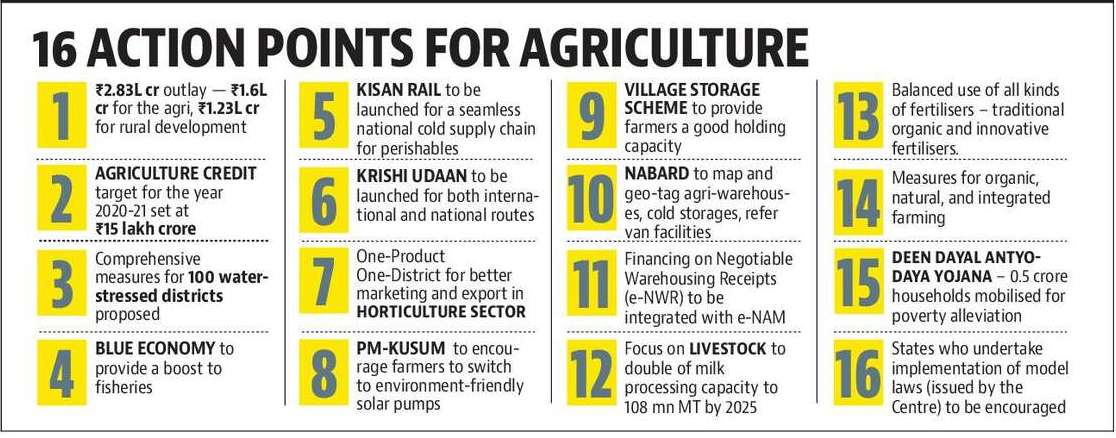
Sayantan Bera
sayantan.b@livemint.com
New Delhi : The budget presented on Saturday promised to bring prosperity to farmers through a series targeted interventions, from improved market access to higher access to credit but slashed the fertiliser subsidy by ₹9,000 crore.
The food subsidy bill was also cut by a massive ₹69,000 crore, from ₹1.84 trillion in 2019-20 (budgeted estimate) to ₹1.15 trillion in 2020-21.
Lower provisioning toward food subsidy means that the Food Corporation of India (FCI), the central agency that procures cereals from farmers and supplies it to beneficiary households under the public distribution system, will be borrowing from the National Small Savings Fund to make up the deficit, said Siraj Hussain, former agriculture secretary.
Further, a cut in food subsidy implies that despite a deteriorating food security situation in rural India driven by joblessness, stagnating wages, and rising food inflation, coverage under the scheme is unlikely to increase.
In fact, the Economic Survey released on Friday advised the government to reduce coverage under the National Food Security Act, 2013, to the bottom 20% of India’s population, compared to the 67% now.
The survey also recommended raising the central issue price, or the price poor families pay to purchase subsidised food from ration shops, which now stands at ₹2-3 per kg.
The cut in fertiliser subsidy is likely to have a direct impact on farmers by reducing fertiliser availability and increasing the cost of cultivation, besides impacting the liquidity situation of the fertiliser manufacturers.
Apart from major subsidies like food and fertiliser targeted at rural India, the budget papers showed an incomplete roll-out of PM-Kisan, the direct cash assistance scheme for farmers launched ahead of the general elections last year.
In 2019-20 the government spent ₹54,370 crore under the scheme, compared to the ₹75,000 crore it had planned, saving a staggering ₹21,000 crore.
So far, only 84 million out of an estimated 145 million farm households in India have benefited under the scheme.
